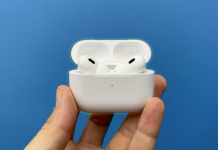If for the Pro models there should be important improvements regarding the photographic sector, especially on the “Max” version, also for iPhone 15 and iPhone 15 Plus there should be some news.
In particular, according to authoritative analyst Ming-Chi Kuo, these two “low-end” iPhones should integrate a new 48-megapixel “stacked” sensor that, in addition to a higher resolution than the current 12-megapixel, will allow you to capture more light in environments with low ambient light thanks to pixel-binning technology.
According to Kuo, the yield problems of the new design of this CMOS sensor would be overcome thanks to Sony increasing its production capacity by 100-120% to meet the considerable demand from Apple. As a result, the Japanese company would significantly reduce the supply of sensors to other partners for their Android-based devices.
Apple first adopted a 48-megapixel sensor on the iPhone 14 Pro and iPhone 14 Pro Max. This sensor allows you to capture photos in 48 megapixel ProRAW format, retaining a large amount of detail and information, the latest for later editing. For iPhone 14 and iPhone 14 Plus, however, a 12-megapixel sensor was used once again.
What Kuo said further confirms the anticipations made last January by Jeff Pu, an analyst at the investment company Haitong International Securities, according to which a new three-layer sensor capable of capturing more light would arrive on the iPhone 15 and iPhone 15 Plus. At the time, Pu said that this sensor could cause production delays. According to Ming-Chi Kuo, these problems have all been overcome.
Apple will announce its new iPhone 15 in September, although there are rumors of possible delays caused by some production problems of the Pro models’ displays. According to Tim Long, an analyst at the British bank Barclays, iPhone 15 Pro could cost about $ 100 more than the iPhone 14 Pro, iPhone 15 Pro Max will instead be more expensive than $ 100/200 than the iPhone 14 Pro Max. For iPhone 15 and iPhone 15 Plus prices should be in line with current prices.
Among the features of the Pro models, in addition to a periscopic telephoto lens on the Max, there would be the USB-C port, a titanium frame, a customizable action button, A17 Bionic processor, display with thinner bezels, Wi-Fi 6E, a greater amount of RAM and a new Ultra Wideband chip.
































